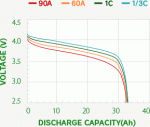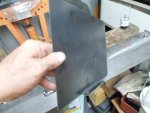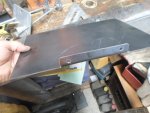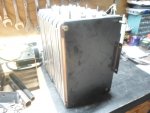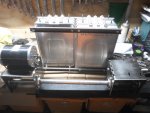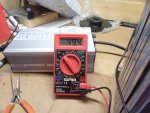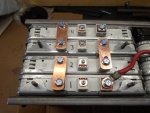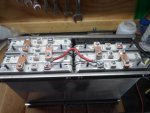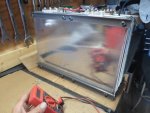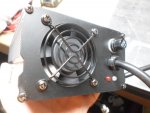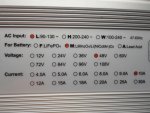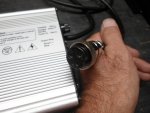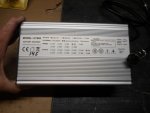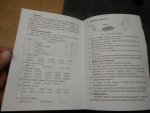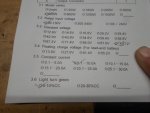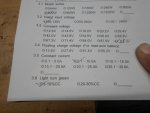Functional Artist
Well-known member
I've been doin' more research 
The battery in the Nissan Leaf is manufactured and assembled by the Automotive Energy Supply Corporation (AESC), a joint venture corporation between Nissan and NEC located just outside of Yokohama, Japan.
The battery pack consists of 48 modules & each module is made of four individual pouch (also known as laminate) cells. The four cells are electrically configured as 2 in series and 2 in parallel.
According to AESC each cell is rated at 32.5 Ah, or about 10X that of the 18650 cell used in the Tesla.
It uses a different material for the cathode called lithium-manganese-oxide with nickel oxide (LiMn2O4 with LiNiO2) that is inherently safer than the lithium-cobalt-oxide cathode material used in mobile devices and the Tesla pack.
The cell’s voltage chart shows a maximum cell voltage of 4.2V.
Rated nominally at 3.75V, one pouch cell can store a maximum 122 Wh of energy, or about 10 times what an iPhone 6 Plus battery can store.
The voltage chart shows that one cell can deliver at least 90A of current.
The added safety of the LMnO material, incurs some important penalties.
First, the intrinsic energy density of the individual pouch is only about 320 Wh/L. Compare this to nearly 700 Wh/L for the Panasonic cells used by Tesla.
Second, the use of large pouches makes it necessary to have dual levels of packaging, one at the module level, then again at the pack level. This adds unnecessary weight and volume to the pack.
Another way to look at this mechanical inefficiency:
The total weight of the 192 cells is 151 kg (332 lbs) — that’s the part that really stores energy — to which the steel boxes, plates, wire harnesses and electronics add another 144 kg (316 lbs) for a total pack weight of 295 kg (648 lbs). In other words, that’s 316 lbs of added weight that contributes zero to energy storage. Each pound of weight in the Leaf battery pack stores 37 Wh of energy. By comparison, each pound of weight in the Tesla S pack stores 64 Wh of energy!
https://qnovo.com/inside-the-batter...d NEC located just outside of Yokohama, Japan.
So, these cells are designed & made in Japan (NOT China)
...each cell (can contain) 122 Wh of energy (~32.5AH) or 488Wh (~60AH) per module
...& can deliver almost 90A
Plus, they seem to be safer, to use, than 18650's

The battery in the Nissan Leaf is manufactured and assembled by the Automotive Energy Supply Corporation (AESC), a joint venture corporation between Nissan and NEC located just outside of Yokohama, Japan.
The battery pack consists of 48 modules & each module is made of four individual pouch (also known as laminate) cells. The four cells are electrically configured as 2 in series and 2 in parallel.
According to AESC each cell is rated at 32.5 Ah, or about 10X that of the 18650 cell used in the Tesla.
It uses a different material for the cathode called lithium-manganese-oxide with nickel oxide (LiMn2O4 with LiNiO2) that is inherently safer than the lithium-cobalt-oxide cathode material used in mobile devices and the Tesla pack.
The cell’s voltage chart shows a maximum cell voltage of 4.2V.
Rated nominally at 3.75V, one pouch cell can store a maximum 122 Wh of energy, or about 10 times what an iPhone 6 Plus battery can store.
The voltage chart shows that one cell can deliver at least 90A of current.
The added safety of the LMnO material, incurs some important penalties.
First, the intrinsic energy density of the individual pouch is only about 320 Wh/L. Compare this to nearly 700 Wh/L for the Panasonic cells used by Tesla.
Second, the use of large pouches makes it necessary to have dual levels of packaging, one at the module level, then again at the pack level. This adds unnecessary weight and volume to the pack.
Another way to look at this mechanical inefficiency:
The total weight of the 192 cells is 151 kg (332 lbs) — that’s the part that really stores energy — to which the steel boxes, plates, wire harnesses and electronics add another 144 kg (316 lbs) for a total pack weight of 295 kg (648 lbs). In other words, that’s 316 lbs of added weight that contributes zero to energy storage. Each pound of weight in the Leaf battery pack stores 37 Wh of energy. By comparison, each pound of weight in the Tesla S pack stores 64 Wh of energy!
https://qnovo.com/inside-the-batter...d NEC located just outside of Yokohama, Japan.
So, these cells are designed & made in Japan (NOT China)

...each cell (can contain) 122 Wh of energy (~32.5AH) or 488Wh (~60AH) per module
...& can deliver almost 90A
Plus, they seem to be safer, to use, than 18650's

